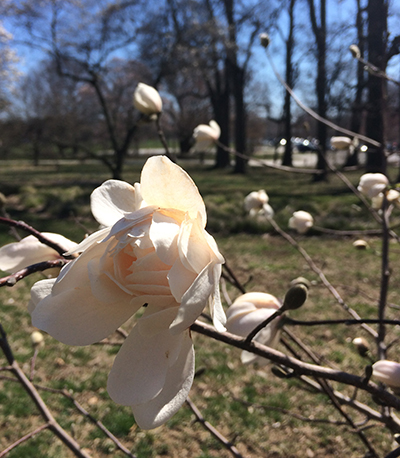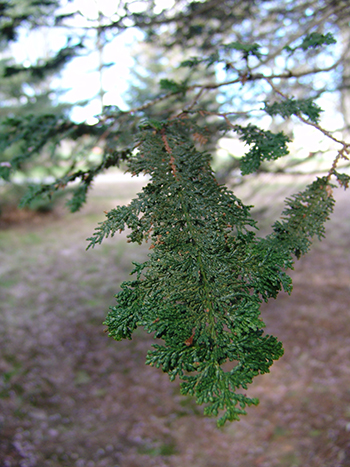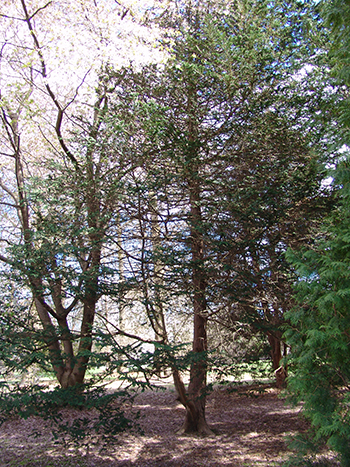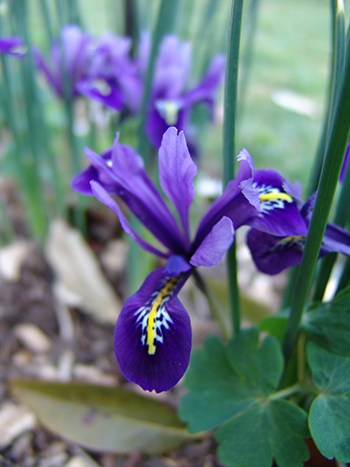
Plants of the Week: April 8

Magnolia x loebneri ‘Wildcat’
The Magnolia Collection between Worth Health Center and Mertz Residence Hall is truly something to behold. At this time of year each tree takes its turn with bright showy flowers from paper-white to bright pink and even some rich yellow. All of this is complemented by the small spring ephemerals growing in the lawn around them.
Magnolia x loebneri ‘Wildcat’ is quite small as it is a relatively new addition to the collection. It stands only about six or seven feet tall but is decked with large white flowers. The flowers sport a multitude of tepals, some sources say up to fifty per flower, which gives them a white rose-like appearance as they begin to open this time of year.
Sources indicate that the small, deciduous tree, Magnolia x loebneri, is a hybrid of Magnolia kobus and Magnolia stellata. The cultivar ‘Wildcat’ was selected for its fragrant, doubled flowers. photo credit: J. Bickel

Chamaecyparis obtusa ‘Filicoides’
The Pinetum on the south side of campus near the train tracks is home to many interesting plants that are often partially obscured and can be overlooked. Though we have many specimens of Hinoki falsecypress in the collection, we have only one of the cultivar ‘Filicoides’.

Something of an oddity, C. obtusa ‘Filicoides’ has miniature, spraying, dark-green, foliage that grows very slowly. The tree, however, is relatively large and sparsely branched offering a clear view of the peeling, reddish bark. Originally native to Japan, Hinoki falsecypress is a very common tree and shrub in American gardens. photo credit: R. Robert

Iris reticulata ‘Pixie’
Though small, ‘Pixie’ packs a punch. Only about six inches tall, this Iris is diminutive compared to its more common dutch or bearded relatives, but its color is just as exciting. Commonly called the netted iris, Iris reticulata is generally light blue with yellow spots in the throat; however, the cultivar ‘Pixie’ has true violet petals.
Currently blooming on the outside wall of the Cosby Courtyard, its size, bright color, and bloom time would make it an interesting companion to other spring ephemeral bulbs like Galanthus, Eranthis, or Leucojum. Originally native to the Caucasus mountains, sources indicate that it would appreciate a rock garden planting site. photo credit: R. Robert





No Comments